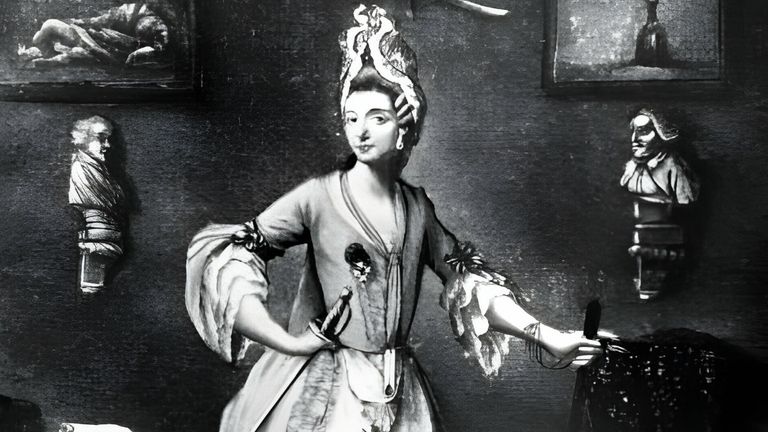Chevalier d’Éon: The French Knight Who Lived As Both A Man And A Woman
In 1762 the Chevalier d’Éon was a war hero, diplomat, and secret spy sent to London to negotiate a peace agreement with their native France. By the time they returned to their homeland, though, the Chevalier was now a Chevalière — a female intellectual and scribe who was beloved in England. Oh, and a potential political timebomb for France! How exactly did this come to pass? And is it accurate to characterize d’Éon as Europe’s first openly transgender person? Note: for this article, we will use the pronoun “they” when gendering d’Éon.
The Chevalier was born male
D'Éon was born in 1728 as — take a deep breath — Charles-Genèvieve-Louis-Auguste-André-Timothée d’Éon de Beaumont. Their family was of noble origins — hence the lengthy succession of names — but not exactly rich. There was no question of d’Éon’s sex at birth; they were declared male and enjoyed a largely uneventful childhood.
They wound up following their father into the legal profession, earning canon law and civil law degrees in Paris, before being appointed royal censor for literature and history at the age of 30.
Le Secret du Roi
In 1756 France entered the Seven Years’ War against Britain and its ally, Frederick the Great of Prussia. During this conflict, d’Éon functioned as the Captain of the Dragoons and gained a sterling reputation as a brave soldier.
They were given the job of Secretary of the Embassy in St. Petersburg, Russia, but this was only their official gig. In truth, they had been recruited into the Secret du Roi organization. Translating as “King’s Secret”, this was King Louis XV’s clandestine spy network.
A secret spy attending metamorphosis ball
While in Russia, D'Éon’s real task was to surreptitiously collect intelligence on Empress Elizabeth’s court, because King Louis aspired to install a Frenchman on the throne of Poland. During this time, they attended many of the Empress’ “metamorphosis balls.” These were extravagant parties where noblemen would dress as women, and vice versa.
According to Dr. Gary Kates, writer of the biography Monsieur d’Éon Is a Woman, this wasn’t unusual at the time. He told website History, “In the medieval and early modern period, cross-dressing was much more socially accepted.”
The Chevalier d’Éon is born
After six years of conflict and palace intrigue, though, the war showed little sign of ending, and France was sinking further and further into debt. So, the King put together a diplomatic group, which included d’Éon, to travel to London in hopes of negotiating a peace deal.
His gamble worked: on February 10, 1763, the Treaty of Paris was signed and the war ended. For their efforts, d’Éon was awarded the Order of Saint-Louis, which gave them the title of Chevalier and came with a substantial pension.

